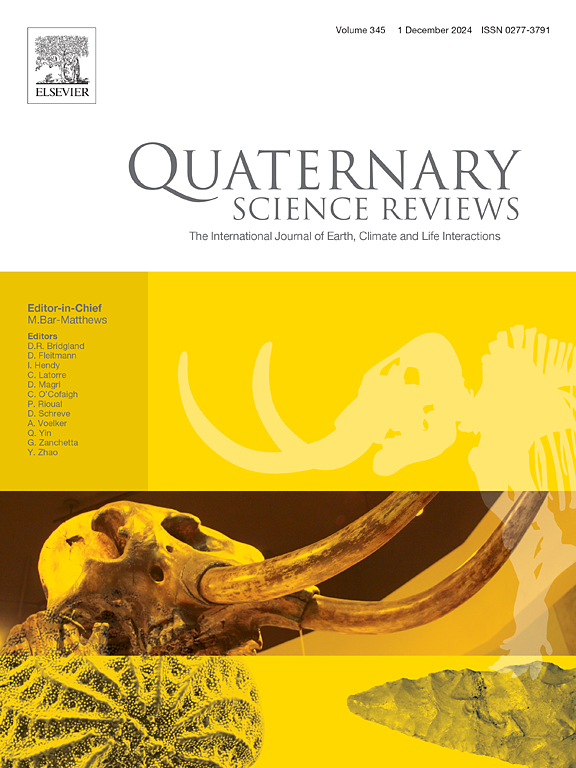Late Pleistocene to present landscape and anthropomorphic change in the Keerqin (Horqin) Sandy Land, China: Insights from sedimentary records
IF 3.2
1区 地球科学
Q1 GEOGRAPHY, PHYSICAL
引用次数: 0
Abstract
The current distribution of dune fields and sandy lands in northeastern China is closely related to the hydrological environment with fluvial processes often providing sediments for dune formation. The Keerqin Sandy Land (also known as Horqin) incised by the tributaries of the West Liao River and located at the northern boundary of East Asian summer monsoon (EAM) in northeastern China, is sensitive to monsoon system variability. As such, aeolian-fluvial-paleosol sequences in northeastern China are valuable geological archives for reconstructing river system behavior and palaeoclimate since the Late Quaternary. Here we show from analysis of these archives that fluvial systems were active at ∼11 ka likely due to the occurrence of floods at the end of the last glaciation. This was followed by frequent channel migration within the floodplains around 7∼5 ka associated with mid-Holocene monsoon precipitation fluctuation and higher humidity. Sediments from this active Holocene fluvial system along with a more humid climate produced conditions in the Keerqin Sandy Land that resulted in extensive paleosol formation. These findings are consistent with the timing and development of paleosols in other sandy lands in northeastern China. Former channels and floodplains along with a higher groundwater table aided the early development of agriculture in this region: many of the former flood plains are still intensively cultivated and highly productive.
中国科尔沁沙地晚更新世至今的地貌和人类形态变化:沉积记录的启示
中国东北地区目前的沙丘地和沙地分布与水文环境密切相关,河川过程往往为沙丘的形成提供了沉积物。西辽河支流切入的科尔沁沙地(又称科尔沁沙地)位于中国东北地区东亚夏季季风(EAM)的北部边界,对季风系统的变化非常敏感。因此,中国东北部的风化-流积-古沉积序列是重建晚第四纪以来河流系统行为和古气候的宝贵地质档案。在此,我们通过对这些档案的分析表明,可能由于末次冰川末期的洪水泛滥,河流系统在 ∼11 ka 活跃。随后,在 7∼5 ka 前后,随着全新世中期季风降水量的波动和湿度的增加,洪泛平原上的河道频繁迁移。全新世活跃的河道系统所产生的沉积物以及更加湿润的气候为科尔沁沙地提供了条件,从而形成了大量的古沉积物。这些发现与中国东北地区其他沙地的古溶胶形成时间和发展情况一致。昔日的河道和冲积平原以及较高的地下水位有助于该地区农业的早期发展:许多昔日的冲积平原至今仍有大量的耕地和高产田。
本文章由计算机程序翻译,如有差异,请以英文原文为准。
求助全文
约1分钟内获得全文
求助全文
来源期刊

Quaternary Science Reviews
地学-地球科学综合
CiteScore
7.50
自引率
15.00%
发文量
388
审稿时长
3 months
期刊介绍:
Quaternary Science Reviews caters for all aspects of Quaternary science, and includes, for example, geology, geomorphology, geography, archaeology, soil science, palaeobotany, palaeontology, palaeoclimatology and the full range of applicable dating methods. The dividing line between what constitutes the review paper and one which contains new original data is not easy to establish, so QSR also publishes papers with new data especially if these perform a review function. All the Quaternary sciences are changing rapidly and subject to re-evaluation as the pace of discovery quickens; thus the diverse but comprehensive role of Quaternary Science Reviews keeps readers abreast of the wider issues relating to new developments in the field.
 求助内容:
求助内容: 应助结果提醒方式:
应助结果提醒方式:


